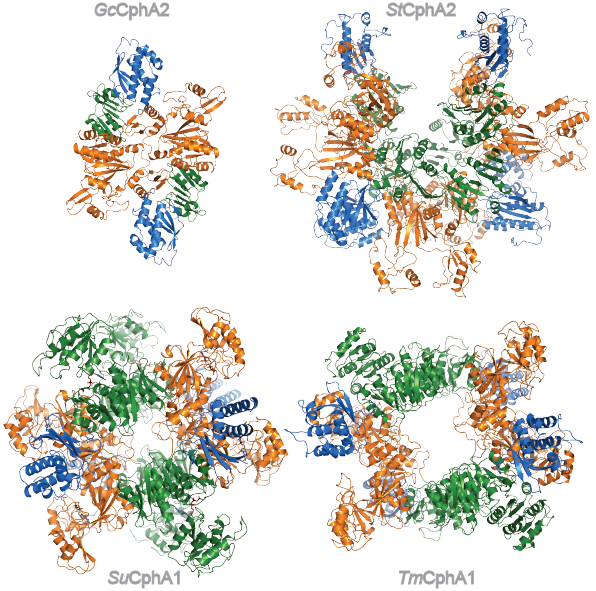Cyanophycin Biosynthesis and Degradation

Despite its name and the long history of research in a cyanobacterial context, cyanophycin metabolism is not limited to this phylum and there is evidence to show that it is a common material in a variety of environments. CphA1 is a common bacterial enzyme found in all major phyla. Moreover, cyanophycin-degrading bacteria have been found in many different environments, including gut microbiota and sediments from water-treatment facilities. In addition to its biological significance, cyanophycin is extensively studied from a biotechnological perspective. It has promising potential industrial and pharmacological uses, both in itself and as a source for other materials. Cyanophycin derivatives already have commercial applications: β-Asp-Arg can be used as a food supplement, and polyaspartate is a biodegradable, biocompatible polymer with multiple potential biomedical and industrial applications, for example as a green antiscalant and water softener.
Our studies have on cyanophycin include the structural elucidation of CphA1 and CphA2, and providing a better understanding of the substrate binding and specificity of cyanophycinase and cyanophycin dipeptide hydrolyase. Detailed characterization of these enzymes is important from a biological perspective, as they explain aspect of cyanophycin metabolism that were previously not understood. From a biotechnological perspective, understanding the enzymes involved in cyanophycin metabolism is important since they are the main source for the production of this polymer and its derivatives.
Relevant Schmeing lab papers: Sharon et al, PNAS 2023; Sharon et al, Nature Chemical Biology 2021; Sharon et al, ACS Chemical Biology 2022; Sharon et al, Nature Communications 2022; Sharon et al, BBA 2022